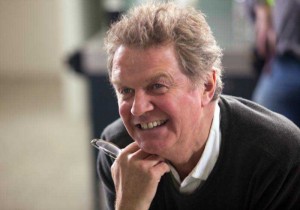
Madden’s ode to India and to life seems to have been fated. Adapted from the novel These Foolish Things by Deborah Moggach, producer Graham Broadbent first took the story to Madden four years ago. Madden, who had always been fascinated by India was interested in the project but couldn’t get on board due to a scheduling conflict. “I always thought the idea of the book was marvelous,” he said. After Madden parted from the project, the film went through a few more directors. As Hollywood circularity would have it, two years later a film Madden was working on was postponed at just the time Broadbent came calling on him again, and voila – this time, everything fit perfectly.
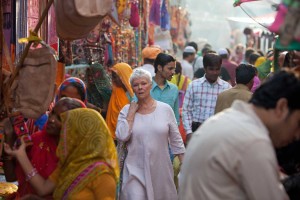
The enormous weaving involved to create a beautiful patchwork of stories made it more difficult to find the right tone for the piece and was a puzzle that had to be solved during the conceptual stage. “The circumstances the characters find themselves in are very absurd, but at the same time, there’s a melancholy and pain which have to do with the particular vicissitudes of age and approaching that part of your life. It’s not easy being old. All of the characters start in a place of pain of one sort or another – physical pain, economical pain, bereavement and loneliness or a sense of feeling irrelevant. Those are the textures that underline the story and figuring out how to orchestrate it so that it bubbles up in the madness and mayhem and comedy without losing either of those things was a challenge,” Madden admited.
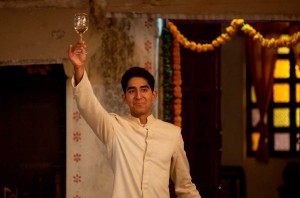 After the director had conceived and perfected the unusual shape of the story as much as he could and the ensemble cast of the seven British retirees had been selected, featuring the remarkable group of: Judi Dench, Celia Imrie, Bill Nighy, Ronald Pickup, Maggie Smith, Tom Wilkinson and Penelope Wilton, along with Dev Patel as the young Indian man running the hotel. Madden traveled to Indian to cast, arguably, the most principal character – The Best Exotic Marigold Hotel. It was paramount to find a location that would physically exhibit the faded granduer that all the characters felt about themselves internally.
After the director had conceived and perfected the unusual shape of the story as much as he could and the ensemble cast of the seven British retirees had been selected, featuring the remarkable group of: Judi Dench, Celia Imrie, Bill Nighy, Ronald Pickup, Maggie Smith, Tom Wilkinson and Penelope Wilton, along with Dev Patel as the young Indian man running the hotel. Madden traveled to Indian to cast, arguably, the most principal character – The Best Exotic Marigold Hotel. It was paramount to find a location that would physically exhibit the faded granduer that all the characters felt about themselves internally.
“Almost the biggest challenge in realizing the film was to cast the character of the hotel. The qualities it has is a huge part of the story. We ended up finding a place in the desert. It looks in the film like it’s in the middle of a city, but it’s actually a tribal chieftain’s palace that’s now an equestrian hotel, a place where they keep horses and people who want to go on safari. It’s quite primitive [but] the place had a particular quality. It had a kind of madness about it or an eccentricity at any rate, which had to do with the fact that it used to be a tribal chieftain’s palace. So it had a kind of faded grandeur and a very difficult to comprehend interior atmosphere. It had seen better days, obviously. And we made that visually connect with Jaipur by building a whole street market right outside the hotel. It was all our work,” Madden explained.
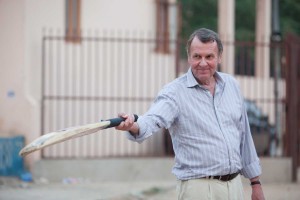 After casting the hotel, Madden embraced the task of building the story of the seven retirees hoping to find their personal solace around this new character. He spent four months in India before shooting. “Once we knew the hotel, we reconstructed the script to reflect the layout of the place.” He did the same to reshape the story to connect with the other shooting locations. “It’s quite a difficult place to shoot in, India. We sometimes rewrote the stories to make it work. It’s a constant process of adapting yourself to what was possible,” Madden added.
After casting the hotel, Madden embraced the task of building the story of the seven retirees hoping to find their personal solace around this new character. He spent four months in India before shooting. “Once we knew the hotel, we reconstructed the script to reflect the layout of the place.” He did the same to reshape the story to connect with the other shooting locations. “It’s quite a difficult place to shoot in, India. We sometimes rewrote the stories to make it work. It’s a constant process of adapting yourself to what was possible,” Madden added.
During this period before principal photography, Madden and production designer Alan MacDonald worked on dressing the hotel. “The rooms were built entirely around the characters. The furniture was all from India. Everything was built around India, to convey the stories of the characters happening upon this beguiling, mystical and often obfuscating country,” Madden said.
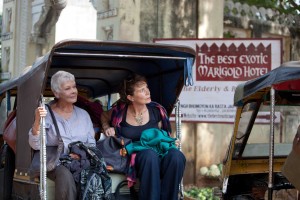 The two months of shooting that followed was an attempt at capturing the heart of all the characters and the soul of India. Ben Davis, the director of photography previously collaborated with Madden on The Debt, so they fell back into step intimately building the cinematographic language of the film. “It’s probably true to say, that the view of India as promoted by tourist brochures – peace and serenity and endless history and a kind of serene beauty – a huge part of India is [actually] the opposite of that. It’s sort of teeming, chaotic, noisy, smelly, with very difficult kinds of urban scenarios. You can see it in the film… We shot the place exactly as it is. In some cases we shot it documentary style in the sense that the camera was not visible to the rest of the world, just to us, because that’s the quality you needed to capture for the story.”
The two months of shooting that followed was an attempt at capturing the heart of all the characters and the soul of India. Ben Davis, the director of photography previously collaborated with Madden on The Debt, so they fell back into step intimately building the cinematographic language of the film. “It’s probably true to say, that the view of India as promoted by tourist brochures – peace and serenity and endless history and a kind of serene beauty – a huge part of India is [actually] the opposite of that. It’s sort of teeming, chaotic, noisy, smelly, with very difficult kinds of urban scenarios. You can see it in the film… We shot the place exactly as it is. In some cases we shot it documentary style in the sense that the camera was not visible to the rest of the world, just to us, because that’s the quality you needed to capture for the story.”
Madden discovered a few delightful surprises during the editorials with editor Chris Gill, but the realization of his film was fairly close to the original script he had labored so meticulously on. More elements of fruition were added during his partnership with music composer Thomas Newman, already a close collaborator who had worked with Madden on his last film. “It’s an unconventional score, because it’s not a series of tunes. Each cue has it’s own world and feeling. We used various Indian instrumentalists and soloists as part of the musical fabric,” Madden stated. Newman’s music injects a livelihood into scenes and characters that helps move the story along seamlessly. “Newman has a very particular quality to his music and it’s a huge part of the way the film works – that score. There’s no question about it,” Madden continued. “I always saw the film as an intoxication in a way, because that’s what happened to the characters. The characters arrive in this world that is so strange and dizzying and confusing, but enchanting and magical at the same time. The music is an enormous part of the film.”
 The director himself could not resist the intoxication of India, the charm and the unforgettable nature of the country. “It was an extraordinary thing, India, the Indian actors and crew, because obviously it’s an extraordinary privilege when you go into another world and you end up finding the language of film and the glamor of film production is a universal language that crosses all those boundaries, as is the language of acting. So that was pretty magical. The main thing that is unforgettable is the country itself. It’s just the most extraordinary place and the people are profoundly generous and moving… India is not a place you can walk away from and not be affected.”
The director himself could not resist the intoxication of India, the charm and the unforgettable nature of the country. “It was an extraordinary thing, India, the Indian actors and crew, because obviously it’s an extraordinary privilege when you go into another world and you end up finding the language of film and the glamor of film production is a universal language that crosses all those boundaries, as is the language of acting. So that was pretty magical. The main thing that is unforgettable is the country itself. It’s just the most extraordinary place and the people are profoundly generous and moving… India is not a place you can walk away from and not be affected.”
Perhaps falling in love with the country, which is the soul of the intertwining story is why the film translates so well. The success of the film among audiences of all ages was a pleasant surprise for Madden. “That’s the paradox. That’s the thing we never expected. It’s extraordinary,” Madden mused. The intoxication of India weaving and layering the story of a group of older people hoping that no matter what age they are, they can be transformed into something beautiful, something new again is a hard to resist refreshment. “It’s about never settling for something like it’s the end because it’s not… until it is,” Madden concluded.





